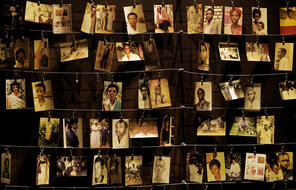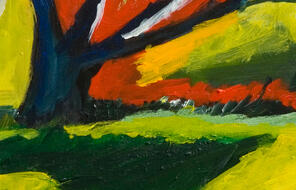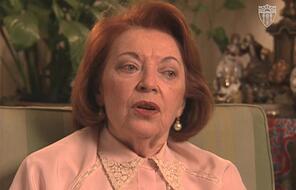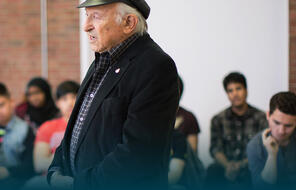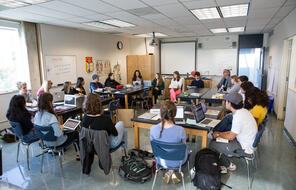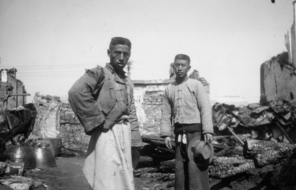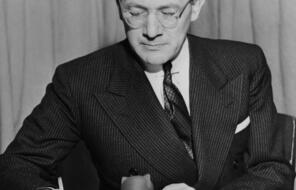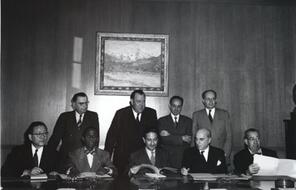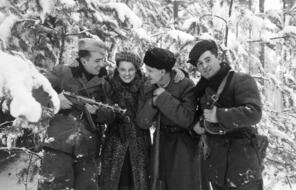Confronting Denial of the Armenian Genocide through Art
At a Glance
Subject
- History
- Social Studies
- Genocide
2015 marked 100 years since the Armenian Genocide. A KQED News article reported on how Los Angeles–area artists, many of them descendants of survivors of the genocide, commemorated the date through plays, music, and murals:
A lot of Armenian-Americans of a certain age can relate to L.A. actress and comedienne Lory Tatoulian.
“I remember when my grandfather would come and visit us, he would share a room with me and he would wake up in the middle of the night screaming,” recalls Tatoulian, sitting beside her mother, Araxy Tatoulian, in the kitchen of Lory’s home in downtown Pasadena.
“And I remember getting scared and running to my mom’s bedroom, and I didn’t understand what was happening,” she says.
Lory’s mother would try to calm her down.
“And I would say, ‘Lory, he has a pain, and later on when you grow up I’m going to tell you the story,’” Araxy Tatoulian says.
Araxy Tatoulian’s parents survived the Armenian genocide, barely.
Her mother was wounded by Ottoman soldiers while she fought alongside men in the Armenian resistance . . .
Araxy’s father, at the age of 8, was taken in by Arab Bedouins after his family was butchered. He was later reunited with surviving family in Lebanon.
Around 200 people crowded into Abril Bookstore in Glendale recently to hear Araxy and Lory Tatoulian sing traditional Armenian songs and share stories and photos of their family’s survival.
Araxy Tatoulian says her generation also kept stories of the genocide alive through art. But it’s younger generations who have really thrust it into the pop culture mainstream.
“This new generation, second and third generation, they feel like there’s still a pain," says Araxy Tatoulian. "So that’s why this year is very special. It’s a sacred centennial.”
Part of the reason for the ongoing pain is the Turkish government’s official policy of denial. As the article explains,
To this day Turkey denies there was ever a systematic plan to wipe out Armenians, or that as many as 1.5 million Armenian men, woman and children perished . . .
. . . An online campaign launched this year by Glendale rapper R-Mean to raise awareness of the genocide sums it up in its slogan: “Our Wounds Are Still Open.”
Open wounds is also the theme of a street mural painted last year in L.A.’s Little Armenia neighborhood by artist Arutyun Gozukuchikyan, who goes by the name ArtViaArt.
The mural shows a forearm sliced open by a dagger, the year 1915 exposed beneath the skin. “Our Wounds are Still Open” is painted in letters that look as if they were carved into the concrete.
"As for why and what difference this will make, it’s just documenting,” Gozukuchikyan says. “I don’t know what the next generation will do, but you’re kind of just painting history.”
A second mural completed a few months ago shows an elderly Armenian woman, Gozukuchikyan’s grandmother, her mouth bound with a cloth that’s again inscribed with the year 1915.
Gozukuchikyan says a lot of older Armenians were hesitant to ever talk about the genocide, let alone to protest.
“This generation’s different, this generation’s stepping up,” Gozukuchikyan says. “This is our way of saying: No one wants to recognize this? We’ll recognize it ourselves.” 1
- 1 Steven Cuevas, “Armenian Genocide Anniversary Sparks Fiery Art in Los Angeles,” KQED News, April 24, 2015.
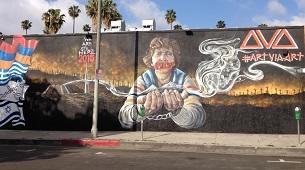
Artist Arutyun Gozukuchikyan, who goes by the name ArtViaArt, painted this mural in 2015 in Los Angeles's Little Armenia neighborhood to foster public awareness of the Armenian Genocide.
How to Cite This Reading
Facing History & Ourselves, "Confronting Denial of the Armenian Genocide through Art," last updated June 13, 2019.
This reading contains text not authored by Facing History & Ourselves. See footnotes for source information.


